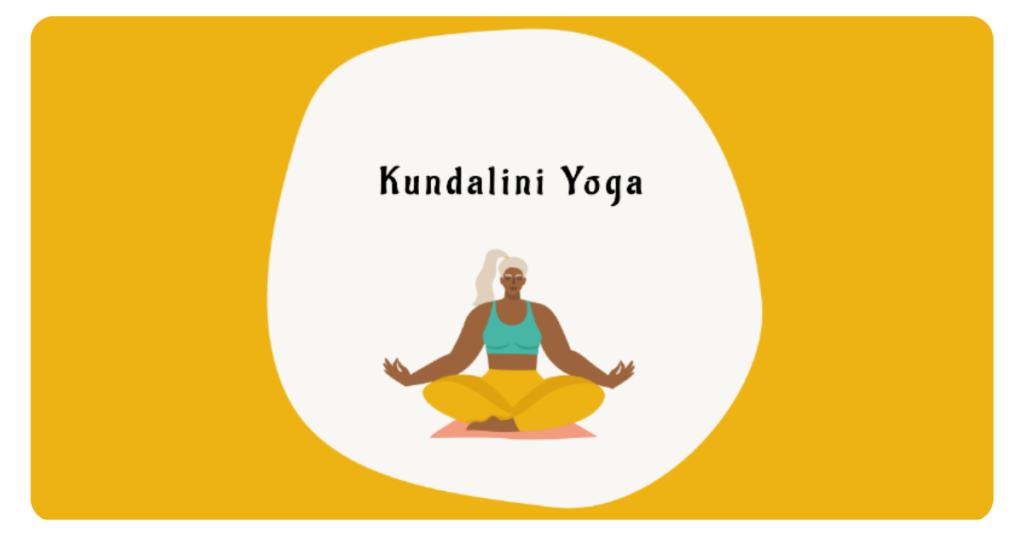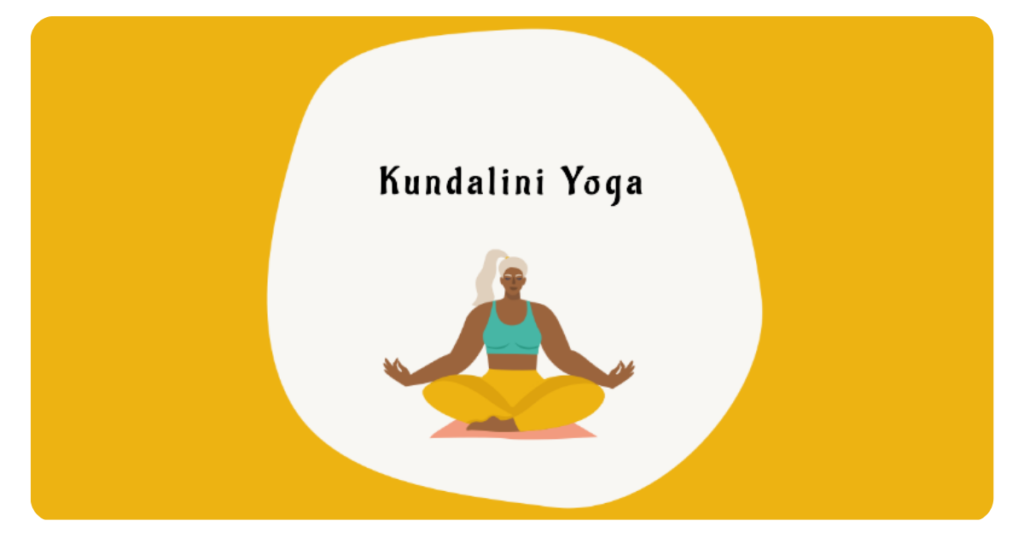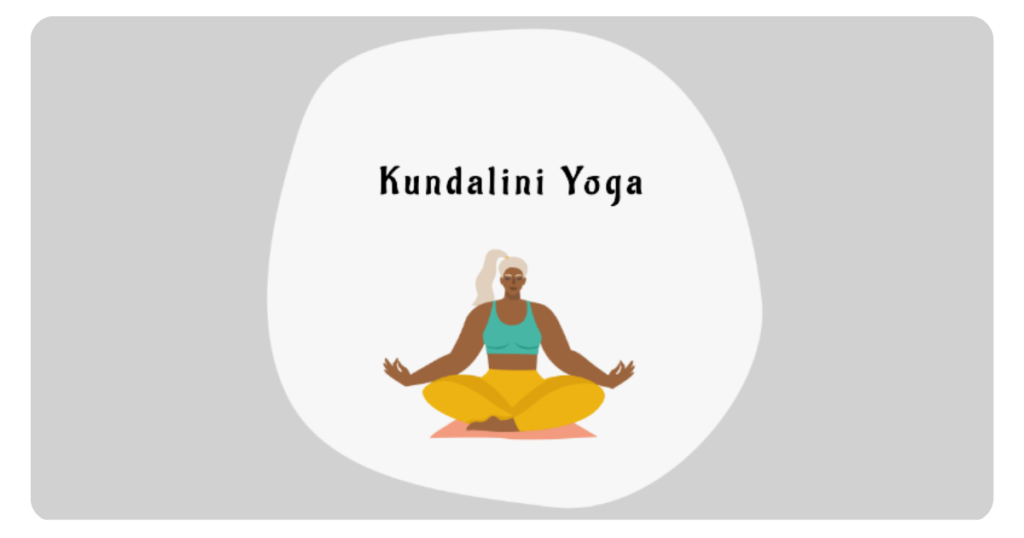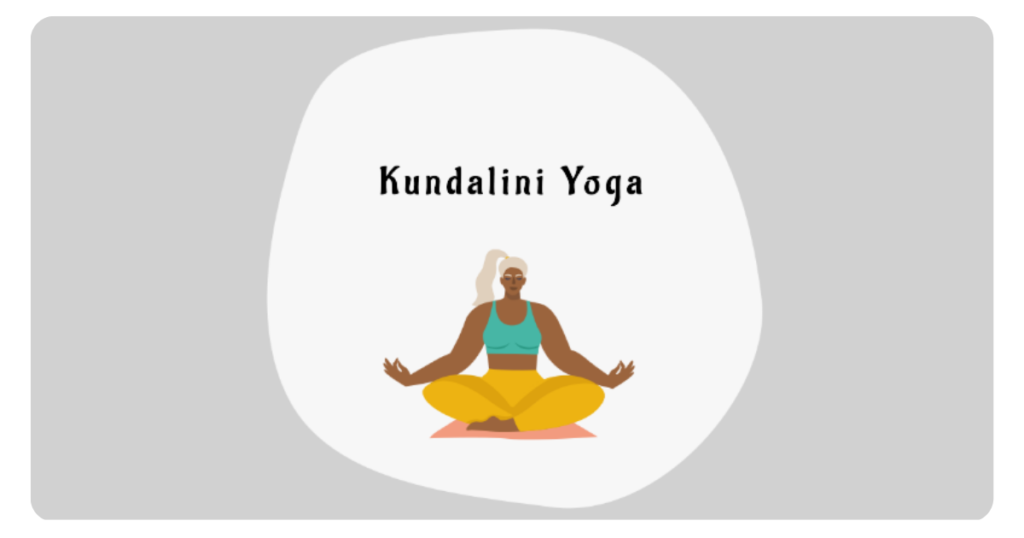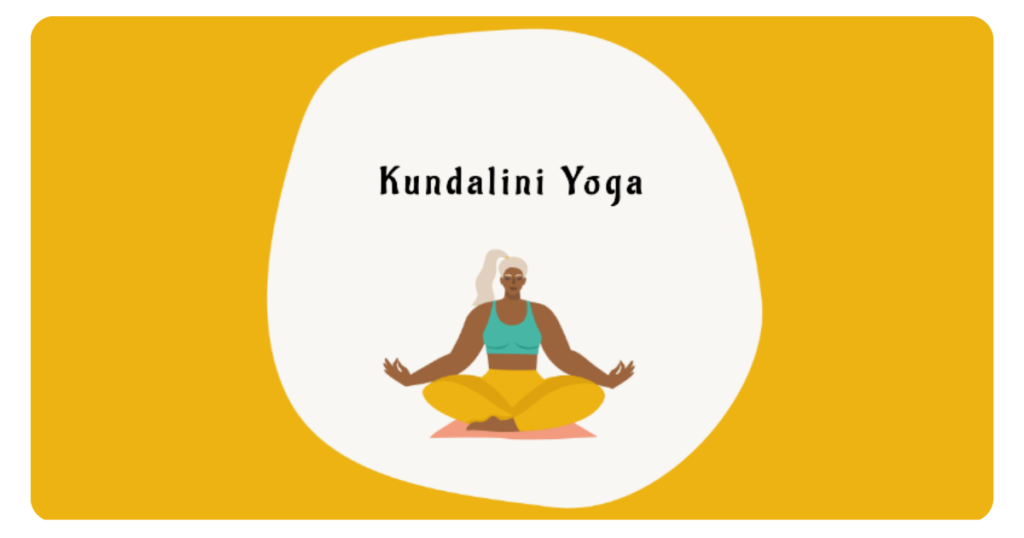
Understanding the Basics of Kundalini Yoga
Kundalini Yoga is an ancient spiritual practice that focuses on awakening the dormant Kundalini energy, also known as the “serpent power,” that is believed to be coiled at the base of the spine. This powerful form of yoga combines physical postures, breath work, chanting, and meditation to help practitioners achieve higher states of consciousness and spiritual enlightenment. What is kundalini yoga
The origins of Kundalini Yoga can be traced back thousands of years to the Indus Valley Civilization in ancient India. It is one of the oldest and most revered yoga traditions, with roots in Hinduism and Tantric philosophies. The practice is centered around the belief that every human being has the potential to unlock this dormant Kundalini energy, which, when awakened, can lead to transformative spiritual experiences and a deeper connection with the divine.
The key principles and philosophy of Kundalini Yoga emphasize the importance of the breath, the use of mantras and sacred sounds, and the cultivation of awareness and presence. Practitioners aim to clear energetic blockages, balance the chakras, and ultimately achieve a state of unity between the individual self and the universal consciousness.
At the heart of Kundalini Yoga is the belief that the Kundalini energy, when activated, can lead to profound spiritual, emotional, and physical transformation. This energy is often described as a coiled serpent resting at the base of the spine, and the goal of the practice is to awaken and guide this energy up through the chakras, or energy centers, of the body.
Table of Contents
The Seven Chakras and Kundalini Yoga
The seven chakras are a fundamental concept in Kundalini Yoga, representing the different energy centers in the body. These chakras are believed to be directly connected to the Kundalini energy, and the practice of Kundalini Yoga aims to balance and align these centers for optimal well-being and spiritual growth.
The seven chakras are:
- Root Chakra (Muladhara): Located at the base of the spine, this chakra is associated with our sense of safety, security, and stability.
- Sacral Chakra (Svadhisthana): Located just below the navel, this chakra is associated with our emotions, creativity, and sexuality.
- Solar Plexus Chakra (Manipura): Located in the upper abdomen, this chakra is associated with our sense of personal power, confidence, and willpower.
- Heart Chakra (Anahata): Located at the center of the chest, this chakra is associated with our ability to love, compassion, and connection with others.
- Throat Chakra (Vishuddha): Located at the base of the throat, this chakra is associated with our ability to communicate, express ourselves, and speak our truth.
- Third Eye Chakra (Ajna): Located between the eyebrows, this chakra is associated with our intuition, imagination, and spiritual awareness.
- Crown Chakra (Sahasrara): Located at the top of the head, this chakra is associated with our connection to the divine, our sense of unity, and our highest states of consciousness.
In Kundalini Yoga, the goal is to activate and balance these chakras through specific kriyas (sequences of postures, breathwork, and meditation), allowing the Kundalini energy to flow freely and harmoniously through the body and mind.
The Science and Research behind Kundalini Yoga
While Kundalini Yoga has its roots in ancient spiritual traditions, modern science has begun to explore the physiological and neurological effects of this practice. Numerous studies have demonstrated the potential benefits of Kundalini Yoga for both physical and mental well-being.
Neurological and Physiological Effects
Research has shown that the practice of Kundalini Yoga can lead to measurable changes in brain activity and function. One study published in the Journal of Alzheimer’s Disease found that regular Kundalini Yoga practice was associated with increased cortical thickness in brain regions linked to memory, attention, and emotional regulation.
Another study published in the International Journal of Yoga examined the effects of a Kundalini Yoga intervention on individuals with mild cognitive impairment. The researchers found that the Kundalini Yoga group showed significant improvements in cognitive function, memory, and overall quality of life compared to the control group.
At the physiological level, Kundalini Yoga has been shown to influence the autonomic nervous system, with studies demonstrating its ability to reduce stress, lower blood pressure, and improve heart rate variability. These physical changes can have a profound impact on overall health and well-being.
Mental Health and Well-being
Kundalini Yoga has also been extensively studied for its potential benefits in the realm of mental health. Research has suggested that the practice can be an effective intervention for conditions such as depression, anxiety, and post-traumatic stress disorder (PTSD).
A study published in the Journal of Affective Disorders found that a Kundalini Yoga intervention was as effective as cognitive-behavioral therapy in reducing symptoms of depression and anxiety in a group of participants. Similarly, a study on veterans with PTSD showed that a Kundalini Yoga program resulted in significant improvements in PTSD symptoms, sleep quality, and overall well-being.
The mindfulness, breath work, and meditation aspects of Kundalini Yoga are believed to play a key role in these mental health benefits, helping practitioners cultivate greater self-awareness, emotional regulation, and resilience in the face of life’s challenges.
Potential Risks and Precautions
While Kundalini Yoga is generally considered a safe and beneficial practice, it’s important to be aware of potential risks and to approach the practice with appropriate care and guidance.
Some potential risks associated with Kundalini Yoga include:
- Psychological reactions: The intense emotional and energetic experiences that can arise during Kundalini Yoga practice may be overwhelming for some individuals, particularly those with a history of trauma or mental health conditions.
- Physical strain: Certain Kundalini Yoga postures and breath work techniques can be physically demanding and may not be suitable for everyone, especially those with pre-existing injuries or medical conditions.
- Spiritual bypassing: In some cases, individuals may use Kundalini Yoga as a form of spiritual bypassing, avoiding the deeper emotional and psychological work necessary for true transformation.
To mitigate these risks, it’s recommended to practice Kundalini Yoga under the guidance of a qualified and experienced teacher, who can provide appropriate modifications and support. It’s also important for practitioners to be mindful of their own physical and emotional limitations and to seek medical or mental health support if needed.
The Kundalini Yoga Experience
Kundalini Yoga is a unique and transformative practice that can lead to a wide range of experiences and effects, both on a physical and spiritual level. Understanding what to expect can help practitioners approach the practice with the right mindset and preparation.
The Purpose and Benefits of Kundalini Yoga
The primary purpose of Kundalini Yoga is to awaken and harness the Kundalini energy, which is believed to be the source of our spiritual and creative potential. By activating and guiding this energy through the chakras, practitioners aim to achieve a state of unity, enlightenment, and connection with the divine.
Some of the key benefits of Kundalini Yoga include:
- Spiritual Awakening: Kundalini Yoga is often described as a “fast-track” to spiritual growth and enlightenment, helping practitioners access higher states of consciousness and a deeper sense of purpose.
- Emotional Healing: The practice can help release emotional blockages, trauma, and negative patterns, leading to greater emotional balance and self-awareness.
- Improved Mental Health: Kundalini Yoga has been shown to reduce symptoms of depression, anxiety, and stress, while enhancing cognitive function and overall well-being.
- Increased Energy and Vitality: The breath work and physical postures of Kundalini Yoga are designed to boost energy levels, improve circulation, and support physical health.
- Enhanced Creativity and Intuition: By unlocking the Kundalini energy, practitioners may experience a surge of creative inspiration and a heightened sense of intuition.
The Kundalini Yoga Practice
The Kundalini Yoga practice typically includes a combination of physical postures (asanas), breath work (pranayama), chanting (mantra), and meditation. These elements are woven together in specific sequences, known as kriyas, to activate and guide the Kundalini energy.
Some common Kundalini Yoga practices include:
- Kriyas: Structured sequences of postures, breath work, and meditation, designed to target specific energy centers or achieve particular goals.
- Mudras: Hand gestures that are believed to influence the flow of energy in the body and mind.
- Mantras: Sacred sounds and chants that can be used to focus the mind, create vibrational shifts, and invoke higher consciousness.
- Meditation: Techniques such as trataka (candle gazing), nada yoga (sound meditation), and kundalini meditation to cultivate deep inner awareness and stillness.
The Kundalini Yoga practice is often described as both physically and mentally demanding, requiring a high level of focus, discipline, and commitment. Practitioners may experience a wide range of sensations and effects, from physical tingling and heat to emotional catharsis and mystical experiences.
What to Expect during a Kundalini Yoga Session
During a Kundalini Yoga session, practitioners can expect to encounter a range of experiences, both physical and psychological. It’s important to approach the practice with an open mind and a willingness to surrender to the process.
Some common experiences that may arise during a Kundalini Yoga session include:
- Physical Sensations: Tingling, pulsing, or heat in the body, particularly in the spine and energy centers.
- Emotional Responses: Intense emotions, such as joy, fear, anger, or sadness, may arise and be released.
- Altered States of Consciousness: Practitioners may experience altered perceptions, visions, or a sense of transcendence and connection with the divine.
- Energetic Shifts: Participants may feel a palpable shift in the energy of the body and mind, with a sense of purification and balance.
- Psychosomatic Responses: Some individuals may experience physical reactions, such as shaking, trembling, or spontaneous movements, as the Kundalini energy is activated.
It’s important to remember that the Kundalini Yoga experience can be highly personal and unique to each individual. Some practitioners may have a profound, life-changing experience, while others may simply feel a sense of relaxation and rejuvenation.
Regardless of the specific effects, it’s crucial to approach the practice with patience, self-compassion, and the guidance of an experienced teacher, who can help navigate the various stages of the Kundalini awakening process.
Preparing for Kundalini Yoga
Before embarking on the Kundalini Yoga journey, it’s important to understand the necessary preparations and considerations to ensure a safe and enriching practice.
Who Can Practice Kundalini Yoga?
Kundalini Yoga is a practice that can be enjoyed by people of all ages, backgrounds, and physical abilities. However, it’s important to note that the practice may not be suitable for everyone, particularly those with pre-existing medical conditions or mental health challenges.
Individuals with the following conditions may need to approach Kundalini Yoga with additional caution or seek medical advice before starting the practice:
- Mental Health Conditions: Individuals with a history of mental health conditions, such as psychosis, bipolar disorder, or severe trauma, may be more susceptible to the intense emotional and energetic experiences that can arise during Kundalini Yoga.
- Neurological Conditions: Certain neurological conditions, such as epilepsy or Parkinson’s disease, may be exacerbated by the rapid changes in brain activity and energy flow that can occur during Kundalini Yoga.
- Cardiovascular Conditions: Individuals with heart or circulatory issues may need to modify or avoid certain Kundalini Yoga practices that can significantly impact the cardiovascular system.
- Pregnancy: Pregnant individuals should consult with a qualified Kundalini Yoga teacher or healthcare provider before practicing, as some postures and breathing techniques may not be suitable during pregnancy.
It’s always best to consult with a healthcare professional or a qualified Kundalini Yoga teacher before starting the practice, to ensure it is safe and appropriate for your individual needs and circumstances.
Choosing a Kundalini Yoga Teacher
Selecting a knowledgeable and experienced Kundalini Yoga teacher is essential for a safe and transformative practice. When choosing a Kundalini Yoga teacher, it’s important to consider the following factors:
- Certification: Ensure that the teacher has received proper training and certification in Kundalini Yoga, typically through a recognized school or lineage.
- Experience: Look for a teacher with several years of experience teaching Kundalini Yoga, as the practice can be highly nuanced and requires a deep understanding of the tradition.
- Teaching Style: Observe the teacher’s teaching style and approach to ensure it aligns with your personal preferences and learning style.
- Reputation: Research the teacher’s reputation within the Kundalini Yoga community and look for reviews or testimonials from their students.
- Alignment with Your Values: Choose a teacher whose personal and professional values resonate with your own beliefs and intentions for practicing Kundalini Yoga.
It’s also important to establish a strong relationship with your Kundalini Yoga teacher, as they will be guiding you through the various stages of the practice and supporting your personal growth and transformation.
Preparing for Your First Kundalini Yoga Class
Before attending your first Kundalini Yoga class, there are a few practical considerations to keep in mind:
Clothing: Wear comfortable, loose-fitting clothing that allows for easy movement. Avoid wearing restrictive or overly tight garments. Accessories: Bring a yoga mat, a blanket or shawl, and a water bottle to help you stay comfortable during the practice. Hydration: Ensure that you are well-hydrated before and after the class, as the intense breath work and physical postures can be dehydrating. Fasting: It’s generally recommended to avoid heavy meals for a few hours before the class, as the practice may involve inverted postures or rapid movements that can be uncomfortable with a full stomach. Mindset: Approach the class with an open mind and a willingness to explore. Kundalini Yoga can be a profound and transformative experience, so be prepared to let go of any preconceptions or expectations. “Iyengar Yoga vs Ashtanga Yoga: Choosing the Right Practice“
By preparing both physically and mentally, you can set the stage for a meaningful and enriching Kundalini Yoga practice.
Incorporating Kundalini Yoga into Your Lifestyle
Integrating Kundalini Yoga into your daily life can provide a wealth of benefits, both in the short and long term. Whether you choose to practice regularly or incorporate Kundalini elements into your existing wellness routine, there are numerous ways to make this ancient tradition a part of your lifestyle.
Integrating Kundalini Yoga into Your Daily Routine
One of the key aspects of Kundalini Yoga is its emphasis on daily practice. Many Kundalini Yoga teachers recommend starting with a daily practice of just a few minutes, gradually increasing the duration as you become more comfortable with the techniques.
Some ways to incorporate Kundalini Yoga into your daily routine include:
- Morning Sadhana: Begin your day with a brief Kundalini Yoga practice, such as a particular kriya or meditation, to set the tone for the day and harness the power of the Kundalini energy.
- Midday Reset: Take a few minutes during your workday to perform a short Kundalini Yoga sequence, such as a breathing exercise or mantra chanting, to recharge and refocus.
- Evening Relaxation: End your day with a Kundalini Yoga practice focused on deep relaxation, such as a restorative pose or a guided meditation, to unwind and prepare for restful sleep.
Combining Kundalini Yoga with Other Wellness Practices
Kundalini Yoga can be seamlessly integrated with other holistic wellness practices to create a well-rounded approach to self-care and personal growth. Some complementary practices include:
- Meditation: Kundalini Yoga’s emphasis on mantra and breath work can be combined with other meditative practices, such as mindfulness or transcendental meditation.
- Ayurveda: The principles of Ayurvedic medicine, which focus on balancing the body’s natural energies, can be applied to Kundalini Yoga practices and lifestyle choices.
- Nutrition: Incorporating Kundalini-friendly foods, such as those that are sattvic (pure, harmonious) in nature, can support the overall goals of the practice.
- Bodywork: Pairing Kundalini Yoga with practices like massage, acupuncture, or energy healing can enhance the healing and transformative effects.
By exploring the synergies between Kundalini Yoga and other wellness modalities, you can create a holistic lifestyle that nourishes your body, mind, and spirit.
Kundalini Yoga for Specific Goals and Challenges
Kundalini Yoga can be tailored to address a wide range of personal goals and challenges, from physical health to emotional and spiritual well-being. Some examples include:
Kundalini Yoga in the Modern World
Kundalini Yoga has seen a surge in popularity in recent years, as more and more people seek out transformative spiritual and wellness practices. This ancient tradition is finding a new audience and adapting to the modern context, while still honoring its rich heritage.
The Rise in Popularity of Kundalini Yoga
Several factors have contributed to the growing interest in Kundalini Yoga:
- Societal Shifts: As people seek deeper meaning and purpose in the face of increasing stress and uncertainty, practices like Kundalini Yoga that promise spiritual awakening and transformation have become more appealing.
- Celebrity Influence: High-profile celebrities, such as Alicia Keys, Gabrielle Bernstein, and Russell Brand, have openly embraced Kundalini Yoga, helping to increase its visibility and mainstream appeal.
- Scientific Research: The growing body of research demonstrating the physical, mental, and emotional benefits of Kundalini Yoga has lent credibility to the practice and made it more accessible to a wider audience.
- Holistic Wellness Trends: The rising popularity of holistic health and wellness practices, including yoga, meditation, and alternative therapies, has created an environment more receptive to the integration of Kundalini Yoga.
Kundalini Yoga Adaptations and Variations
As Kundalini Yoga has become more widely known, various adaptations and variations have emerged to cater to the diverse needs and preferences of modern practitioners. Some examples include:
- Kundalini Yoga for Specific Populations: Specialized Kundalini Yoga classes and programs have been developed for populations such as children, teens, seniors, and individuals with physical or mental health challenges.
- Kundalini Yoga Fusion Styles: Kundalini Yoga has been combined with other yoga styles, such as Vinyasa or Yin Yoga, to create unique hybrid practices that appeal to a broader audience.
- Kundalini-inspired Workshops and Retreats: Standalone Kundalini Yoga workshops, as well as multi-day retreats, have become increasingly popular, offering immersive experiences for both new and experienced practitioners.
- Online Kundalini Yoga Resources: The rise of online yoga platforms and digital content has made Kundalini Yoga more accessible, allowing practitioners to explore the practice from the comfort of their own homes.
Controversies and Misconceptions around Kundalini Yoga
Despite its growing popularity, Kundalini Yoga has also faced some controversies and misconceptions that are important to address:
- Appropriation Concerns: As Kundalini Yoga becomes more mainstream, there have been discussions around cultural appropriation and the need to honor the practice’s roots in the Sikh and Hindu traditions.
- Safety Concerns: The intense nature of Kundalini Yoga, particularly the rapid breath work and energetic activation, has led to some concerns about the potential risks for practitioners, especially without proper guidance and preparation.
- Spiritual Misunderstandings: Misconceptions about the nature of Kundalini Yoga, such as the belief that it is a form of dark or dangerous magic, have persisted in some circles, leading to a lack of understanding and acceptance of the practice.
To address these concerns, it is crucial for Kundalini Yoga practitioners and teachers to approach the practice with reverence, integrity, and a deep respect for its origins and traditions. Ongoing education, dialogue, and the integration of diverse perspectives can help to dispel misconceptions and ensure that Kundalini Yoga continues to be a transformative and accessible practice for all.
The Future of Kundalini Yoga in the 21st Century
As Kundalini Yoga continues to evolve and adapt to the modern world, its future holds great promise. Some potential developments and trends include:
- Increased Accessibility: With the continued growth of online resources and the integration of Kundalini Yoga into mainstream wellness programs, the practice is likely to become more widely accessible to people of all backgrounds and skill levels.
- Continued Scientific Exploration: As the body of research on the benefits of Kundalini Yoga expands, the practice is likely to gain even greater recognition and acceptance within the medical and scientific communities.
- Collaborative Approaches: Kundalini Yoga may see more cross-pollination with other wellness modalities, leading to innovative collaborations and the development of holistic, integrative approaches to personal transformation.
- Preservation of Tradition: There is a growing emphasis on preserving the authentic lineage and traditional teachings of Kundalini Yoga, ensuring that its spiritual essence remains intact as it continues to evolve and reach new audiences.
- Diversification of Teachers and Practitioners: As Kundalini Yoga becomes more diverse and inclusive, we may see an increase in the representation of underrepresented groups among both teachers and practitioners, further enriching the practice.
By embracing the ever-changing needs of the modern world while upholding the timeless wisdom of Kundalini Yoga, this ancient tradition is poised to continue its transformative journey, empowering individuals and communities to unlock their full potential and connect with the divine within.
What is kundalini yoga
Conclusion
Kundalini Yoga is a profound and transformative practice that has the power to awaken the dormant Kundalini energy and lead practitioners on a journey of spiritual, emotional, and physical transformation. By understanding the basic principles and philosophy of Kundalini Yoga, exploring the scientific research behind its benefits, and preparing for a safe and enriching practice, individuals can unlock the secrets of this ancient tradition and integrate it into their modern lives. What is kundalini yoga
Whether you are new to Kundalini Yoga or have been practicing for years, the path ahead is one of self-discovery, growth, and the potential for profound personal and spiritual transformation. By embracing the practice with an open mind and a willingness to explore, you can unlock the full potential of the Kundalini energy and embark on a life-changing journey of awakening and enlightenment.
